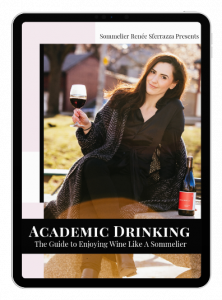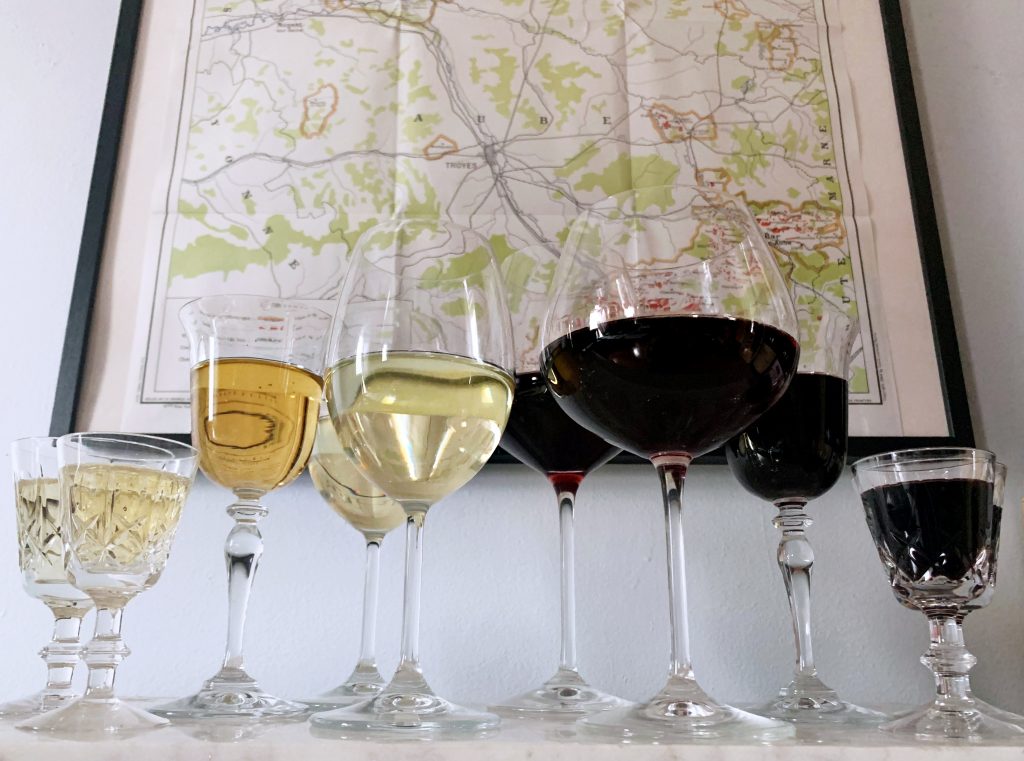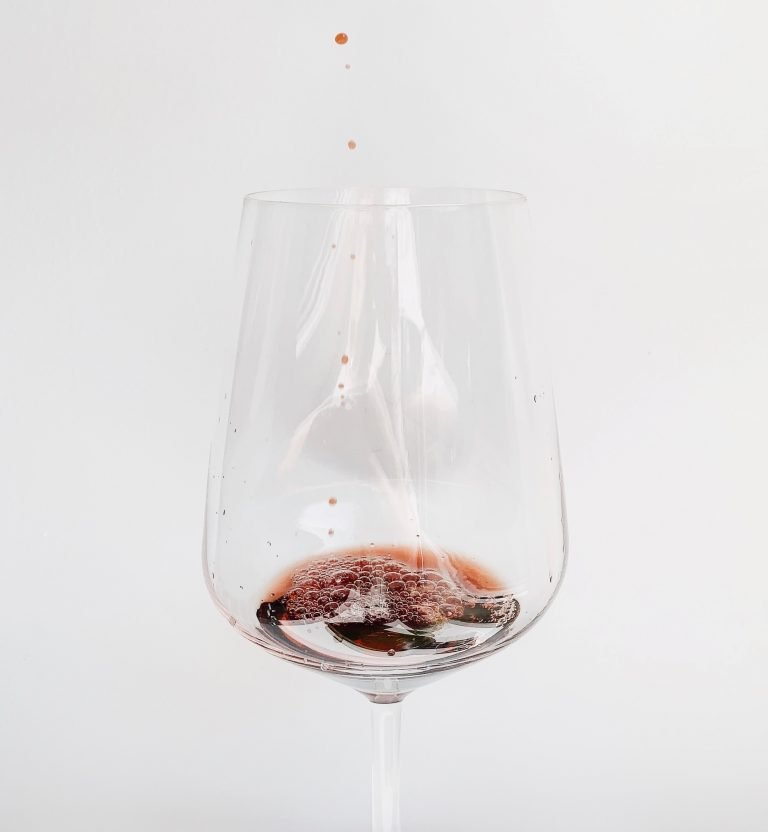

Blind tasting wine is one of those skills that seems to leave people speechless. With the dawn of the Somm documentary series by Jason Wise released in 2012, the general public got a look into what it takes to pass one of the most challenging tests in the wine industry – The Master Sommelier exam. As a budding wine student at the time, I was only 22. Watching that first movie grabbed my attention. It documents the massive amount of blind tasting preparation that goes into this exam, and it was intimidating to watch.
That moment in my life, nearly a decade ago, before I took the time to understand the process behind the technique of blind tasting, I too was always left speechless and in utter awe of seeing a well-seasoned Sommelier call out the notes of wine with ease. Correctly identifying the grape varietal and listing off exactly where the wine is from down to the vintage. However, the most exciting thing about blind tasting wine is that it is not a party trick, nor is it just for people with a great nose and rocking taste buds. This is a skill you can learn!
Once you start to decode the process of blind tasting, it becomes evident that there is a method to the madness. I always liken the process to going to the gym. The first time you start lifting weights, it is pretty understandable that you will not be bench pressing 250 on the first, second or even fiftieth try, it takes time to build up that strength, but it not impossible. As humans, we understand how strong we are, so the goal of being stronger has an exact starting and endpoint.
The key to becoming better at blindly tasting wine is knowing your starting point and where you are trying to go. From this point, it is all about practising your technique, tasting more wine, reading more about the world wine region and creating a mental bank of flavours, textures, regions and structure in the glass.

Look, Smell, Taste, Think!
The first step in this saga is to start tasting wine academically. No more opening the hatch and going straight for the first sip. Let’s slow things down a little and follow the Look, Smell, Taste, Think method. This method is all about collecting clues.
Look
Start by holding a standard wine glass filled with 3oz of wine at a 45-degree angle at about table height. Make sure the surface you are holding it over is coloured white, and let the light of the room shine through the glass to note the colour of the wine. Is it golden, straw yellow, water-white, ruby, purple, garnet, salmon, or magenta? It doesn’t sound like much to decide what colour the wine is but this a big clue and can already help you narrow down what’s in your glass.
Next, pull up your glass and give it a swirl. We are now looking at the ‘legs’. The legs or tears of wine don’t denote its quality or if it is good or bad, they do, however, tell you how to give clues as to how much alcohol and residual sugar can be in a wine. The slower the tear fall and the thicker they are, the more alcohol and residual sugar is in the wine.
Smell
Most of the flavours in wine are actually aromas. We experience the aromas of wine in two ways. Your nose is the first to pick them up, but our retronasal senses get involved too. These smell receptors are activated when we eat or talk after drinking, and they are why the aroma of wine seems to present itself as flavours. Capitalize on the natural talent your body has, and start smelling your wine with your mouth open! I don’t mean to breathe through your nose and mouth simultaneously. Just leave it slightly agape as your smelling your wine. I know it doesn’t sound like much but trust me, it makes a world of difference.
With your technique down-packed, start picking up the notes that you are experiencing in the glass. Are there floral notes? Fruit notes? Does the wine have sweet or spiced aromas? Are they any earthy characteristics? Does the wine smell like a memory or part or a memory? Start defining those flavours. There are no wrong answers but try to find the best descriptor for what you are experiencing.
Taste
Finally, we involve the taste buds. By the time we get to this stage, it already should feel like you have experienced much of the wine. This is just the missing piece. Get every single tastebud ready and activated. To do so, when you take your sip of wine, be sure to make it coat every inch of your mouth before you swallow. From the nose to the palate, the first thing to do is to compare. Are the aromas you experienced the same as the flavours you are experiencing on the palate? How are they different? How are they the same?
Tasting the wine is also when we, at last, get to experience its structure; how the wine’s tannin, acidity, body, alcohol and sweetness shape the drink. Let’s start with acidity. Note how much you are salivating – I like to use the water to lemon scale. If you are drinking a red, rosé or orange wine, define the tannins levels of the wine. You will experience them by how dry your mouth physically feels. I like to use a scale from slightly parched to having a mouth full of sand. Body, define how big, lean, textured of light the wine feels. Alcohol is expressed by how warm you feel after that sip. Then last is sweetness. It is based on a relative candy-like sweetness that is left on your tongue after you swallow.
Think
Putting everything you have experienced from the way the wine looks to how it smells and tasting. This is the process of thinking about the wine. When you start off tasting a wine blind, it is not about being correct but about connecting with the wine and making a memory of it.

Build Up Your Mental Bank
As the wine is telling you more about itself in the glass, you all have begun to collect clues about what could possibly be. What grape or grapes was the wine made from? Which region was it made in? Can we define the winemaking styles are being used in the glass? As much as blind tasting is about academically drinking, it is equally supported by a mental bank of knowledge.
This mental banking is a collection of learning. This is the knowledge of understanding what wines are made where in the world, different flavour notes that various grapes can express and how the structure of the wine is affecting your palate. It does take time to learn a lot about wine. But there are some essential grapes, concepts and regions that giving a bit more focus can really open the mind when tasting blind.
Start memory banking with wine made from world travelling grape varieties. For white wines – Chardonnay, Riesling, Pinot Gris/Grigio, Sauvignon Blanc and Chenin Blanc. For red wines – Cabernet Sauvignon, Pinot Noir, Cabernet Franc, Gamay Noir, Malbec, Syrah Grenache and Merlot. Taste wines from these grapes in as many regions as you can find. Explore how the grape expresses itself differently from country to country. It is also essential to compare European wine productions to productions outside of Europe.
If you haven’t done it already, start mental banking the foods you are eating, the experiences you are living through. Note the smells that exist when you are walking into a coffee shop, walking through the park, or at your best friend’s house. Lock them in and make your own encyclopedia of smells and experiences!
Don’t Get Discouraged and Keep Trying
Even the best of the best get it wrong sometimes. Don’t believe me? Open up YouTube and watch Think You Know Wine’s latest episode, where notable Canadian wine critics spend an evening blind tasting. They might get it right on the nose or be way off base, but they pick themselves up and keep on going – and you should too!
Blind tasting is one of the most humbling experiences in the world of wine. At the same time, it is also a lot of fun. It is not about getting the wine right. It is about exploring what is in the glass and exploring your palate at the same time. So let go of all your worries and just go for it.
